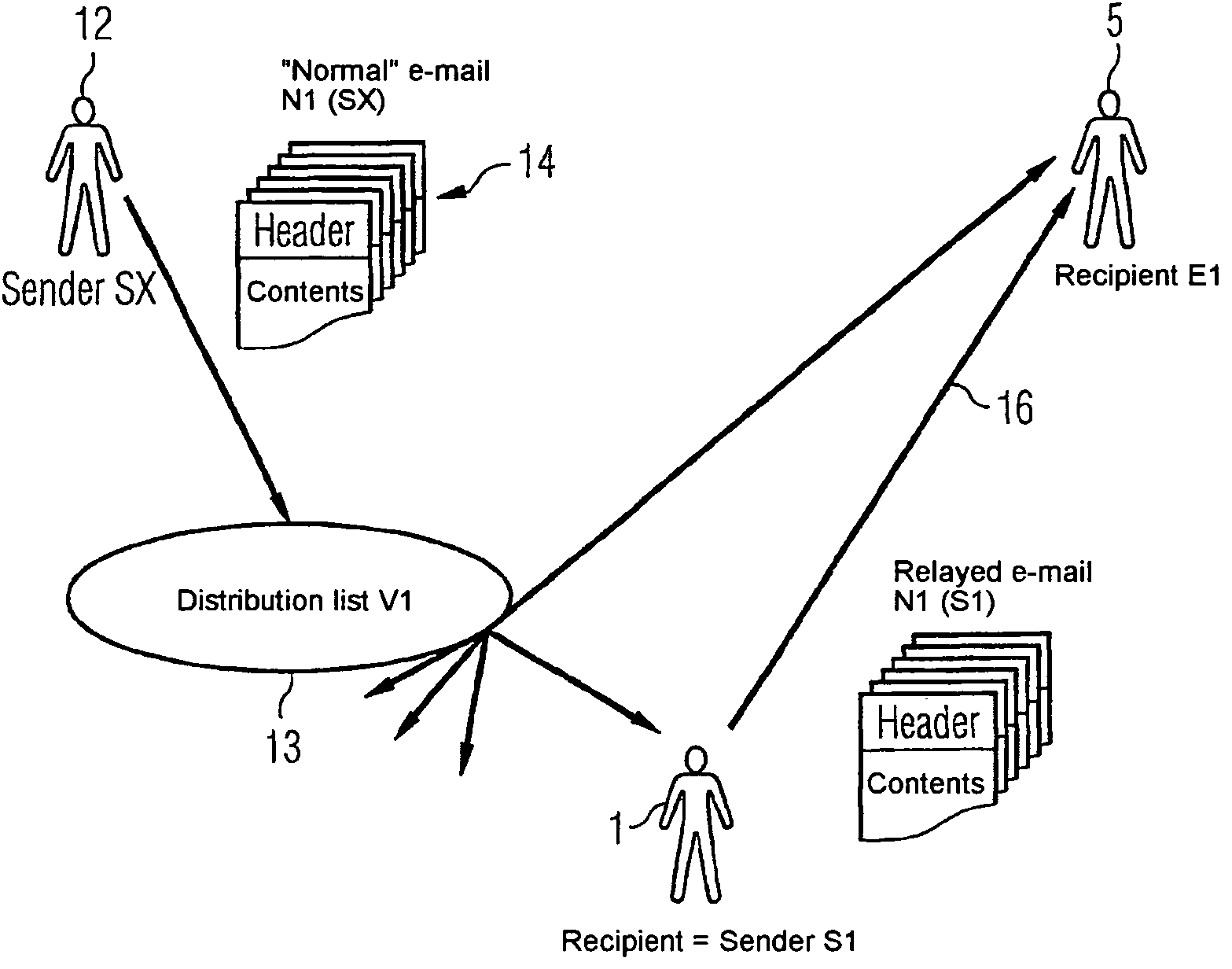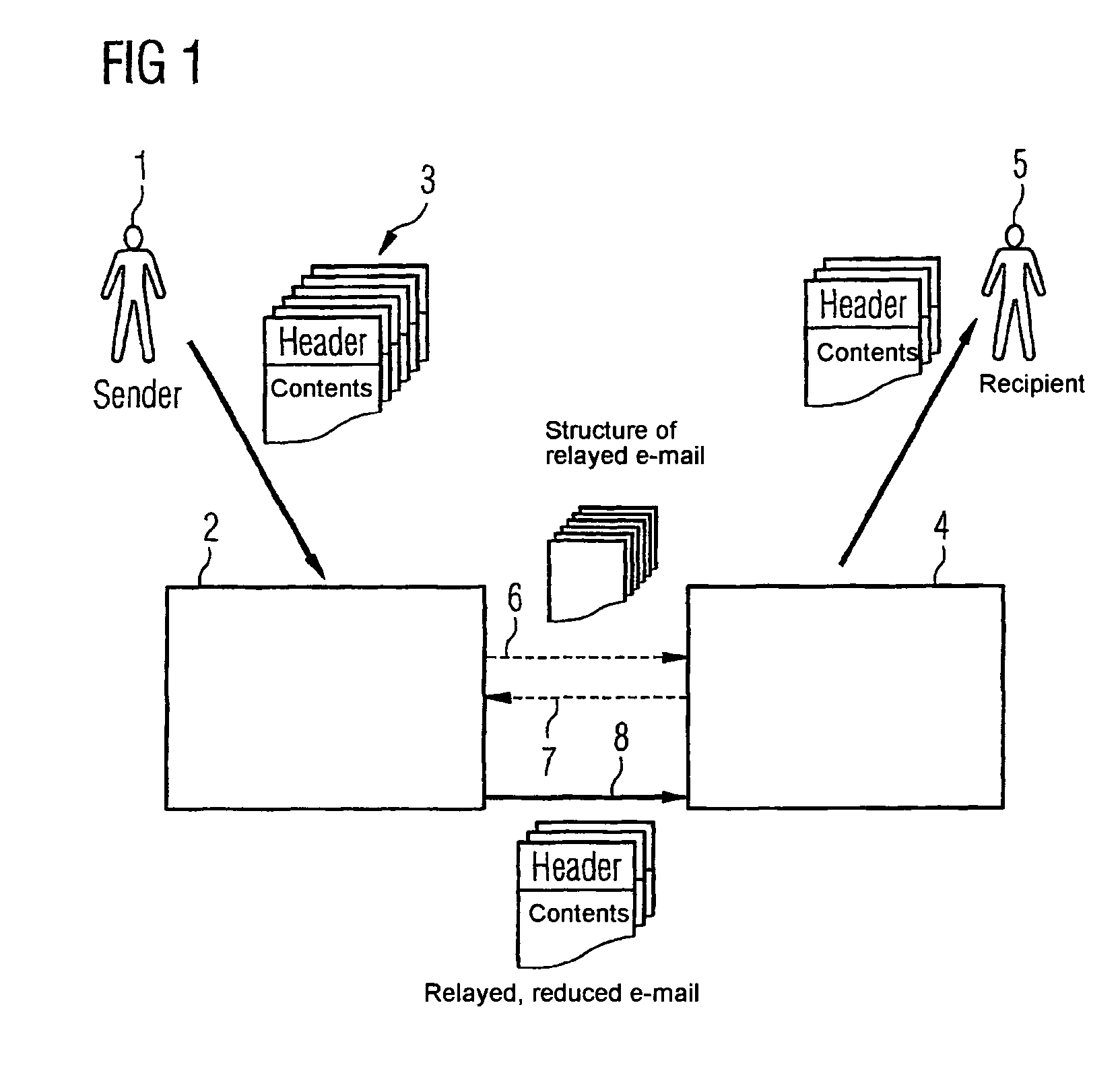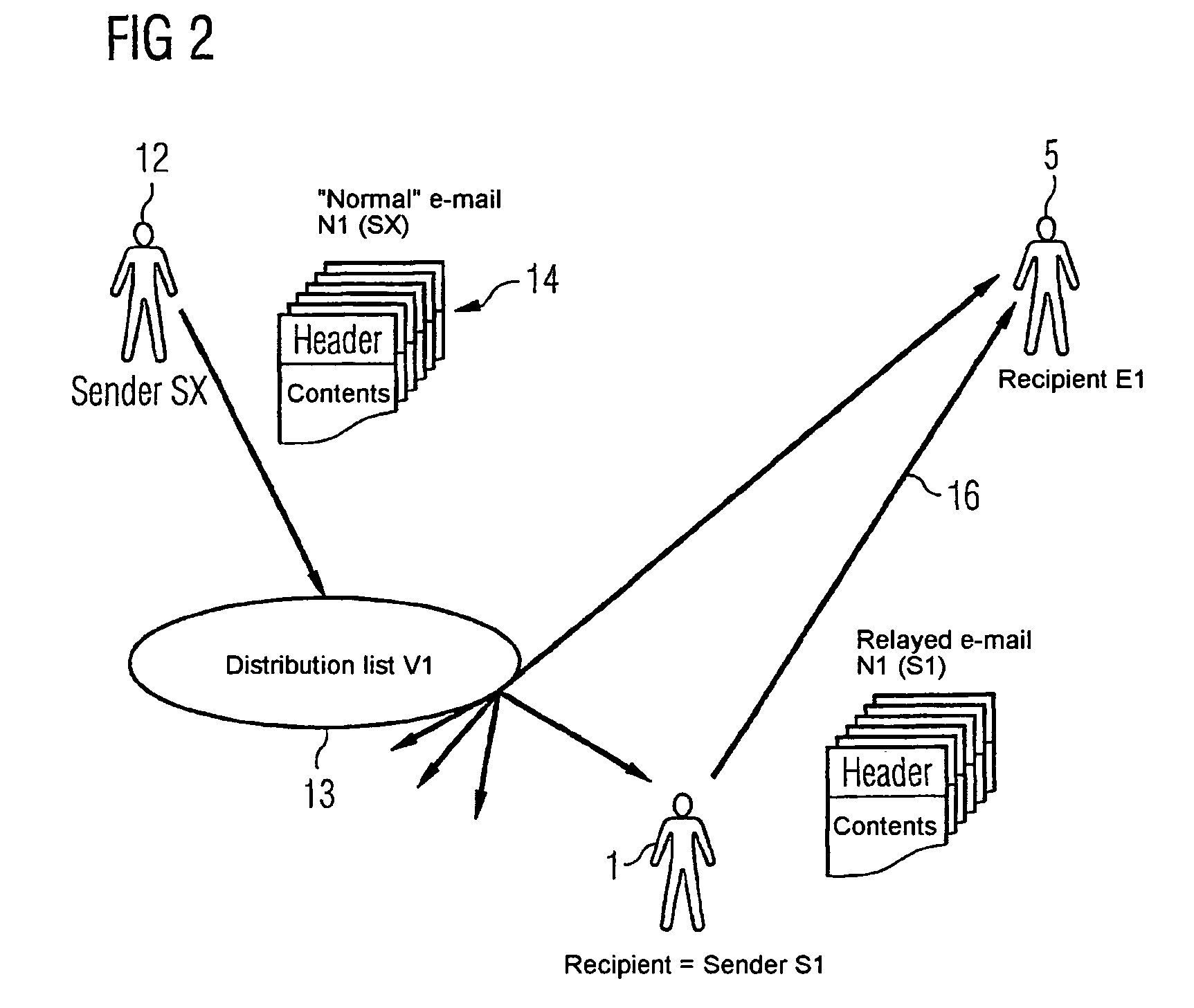Method for transmitting messages in a network
a network and message technology, applied in the field of network message transmission, can solve the problems of difficult to determine whether one of the intended recipients is the recipient of the message to be transmitted, high time-consuming or even impossible task, and virtually impossible for the sender to determine whether one of the intended recipients
- Summary
- Abstract
- Description
- Claims
- Application Information
AI Technical Summary
Benefits of technology
Problems solved by technology
Method used
Image
Examples
Embodiment Construction
[0028]FIG. 1 schematically illustrates the components involved in the method for transmitting messages. These are as follows: a sender 1, a mail processing device 2 assigned to the sender 1, a message 3 which consists of message elements, i.e. a header and attachments, a mail processing device 4 assigned to the recipient, and a recipient 5 for the message.
[0029]The following data is assigned to the message 3: an identifier to indicate that it is a relayed message; date and time of transmission, and an e-mail address of the sender. Special additional information is assigned to each message element when the message 3 is forwarded. These are: date and time of creation of the original message, where these differ from the time of transmission, an e-mail address of the original sender, where this differs from the e-mail address of the sender 1, and the contents of the message element.
[0030]The sequence of a message relaying process is described in greater detail below on the basis of FIGS...
PUM
 Login to View More
Login to View More Abstract
Description
Claims
Application Information
 Login to View More
Login to View More - R&D
- Intellectual Property
- Life Sciences
- Materials
- Tech Scout
- Unparalleled Data Quality
- Higher Quality Content
- 60% Fewer Hallucinations
Browse by: Latest US Patents, China's latest patents, Technical Efficacy Thesaurus, Application Domain, Technology Topic, Popular Technical Reports.
© 2025 PatSnap. All rights reserved.Legal|Privacy policy|Modern Slavery Act Transparency Statement|Sitemap|About US| Contact US: help@patsnap.com



